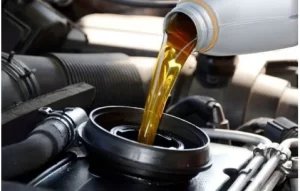
Schedule of Preventative Tasks
Here is a checklist of things you need to check at different times of the year and seasons. Depending on the season and time of year, some parts of your car should be checked frequently, while others should only be done at long intervals. Follow the maintenance schedule and service interval records of your vehicle.
You don’t need to be an expert mechanic to maintain your vehicle. Knowing what you need to do and how often for optimal vehicle maintenance is essential. You can keep your car in good condition by knowing what it needs and when to perform regular maintenance.
You’ll also be able to get top dollar for your car when you decide to sell it if you have proof that it has been maintained. It’s also important to remember that even though car maintenance is not cheap, it can help you avoid costly repairs later.
We’ve created an easy-to-use, downloadable checklist for car maintenance to help you stay on top of the care of your vehicle.
AIR FILTER
The air filter in your engine regulates airflow into your engine. It also helps to keep debris and particulates out. You can increase your fuel economy, reduce your emissions and prolong the life of your machine by ensuring that your air filters are working correctly. You can easily do this at home. Check your owner’s guide for the instructions and to see how often you should change it.
TIRE PRESSURE & TREAD DEPTH
Tires that are well maintained are essential for a fuel-efficient, safe ride. Make it a habit of visually inspecting your tires regularly. Check the tire pressure every month before any long trips or extra weight. Remember your spare. You will need a tire pressure gauge to test your tire pressure. During winter, tire pressure will drop by one pound for every 10 degrees of pressure decrease. You can find out how much air pressure you need in your owner’s guide. The simple pennies method can be used to measure your tread depth.
HEADLIGHTS AND PARKING LIGHTS
The lights in your car should be working correctly, but it’s easy to forget. When parked, please turn on your headlights once a month, and ensure they are working correctly and appropriately positioned. Inspect your turn signals and parking lights as you walk around your vehicle. You can ask a friend to stand behind your car as you apply the brakes. This will ensure that the brake lights work.
OIL & FILTER
Motor oil is used in your car’s engine to perform various tasks: it cools the machine, reduces wear, and prevents corrosion. It is essential to keep it clean for a healthy engine. Depending on your soil type, you may change the oil and oil filter every three months or 3000 km. Owners’ manuals for newer cars often recommend changing your oil between 5,000 and 10,000-mile intervals. Consult your owner’s guide and a professional for the best advice.
ROTATE TIRES
The tread patterns of your tires can vary depending on your vehicle’s alignment, how you use them, and other factors. They may even differ from one side to the next. Rotating tires can help extend tire life by balancing tread wear and preventing noise and vibration.
TRANSMISSION FLUID
Transmission fluid, like engine oil, is a lubricant to keep the transmission moving. It is essential to have your transmission fluid inspected and changed as needed, whether you drive an automatic or manual transmission. This will help you avoid expensive transmission damage or replacement. The manufacturer’s instructions are the best way to go.
TRANSFER CASE FLUIDS
The transfer case in four-wheel-drive or all-wheel-drive vehicles is the part that transfers power from the transmission onto the axles. You’ll want to check the transfer case according to the manufacturer’s recommendations to ensure the fluid is correctly filled and there are no leaks. You must get under the vehicle, so it is best left to a professional.
Inspect SHOCKS and STRUTS
Shocks and struts are essential to the steering system of your car. They control impact and rebound when your vehicle travels over bumps. You should have them inspected by an expert every 50,000 kilometers or if you notice that your car is becoming less smooth or losing control.
COOLANT FLUID CHANGE
The radiator is an essential component of your car that keeps your engine cool. Regularly flushing your cooling system will remove contaminants and ensure your radiator is appropriately filled. Find out from your vehicle’s manufacturer how often you should change your coolant.
SERPENTINE BELTS
The serpentine belt on your car may look like a simple rubber piece, but it is vital to the running of your vehicle. It powers peripheral devices like the alternator, power steering pump, and air conditioning compressor. Inspect the serpentine belt to ensure it’s free from cracks and other wear. If damaged or your vehicle manufacturer recommends it, replace the belt.
DIFFERENTIALS FOR THE FRONT OR REAR
Differentials are devices that allow the engine to split torque or power. This allows the ability to be sent to the wheels. There is one differential in front-wheel-drive vehicles and two differentials in rear-wheel-drive vehicles. However, 4-wheel-drive and all-wheel-drive vehicles have both a rear and front differential and may even include a center differential. To ensure that your differentials work correctly, they need to be lubricated. Professionally check your fluid and replace it whenever the vehicle manufacturer suggests.
REPLACE WINDSHIELD WIPERS
The windshield wipers should be replaced every year or when their effectiveness deteriorates. Winter wiper blades can also help to improve performance in winter. To prevent ice from forming on your windows, you should pull the wipers back when parking in the winter.
BATTERY PERFORMANCE CHECK
The battery in your car is vital for adequately operating your vehicle. The car battery supplies large electrical current to the vehicle’s starter, engine, and other electronic components. Battery performance is affected by extreme temperatures. Regular battery testing ensures that the battery will work when needed.
CHANGE TIRES
Depending on where you live, you can change your tires to snow/winter tires in the cold and snowy winter months. Tire compounds that are not winter tires become harder when temperatures drop below freezing. This reduces traction, handling, and braking performance. Winter tires have tread patterns and compounds designed to stay soft in cold temperatures and grip in snowy, slushy, and icy conditions.

















